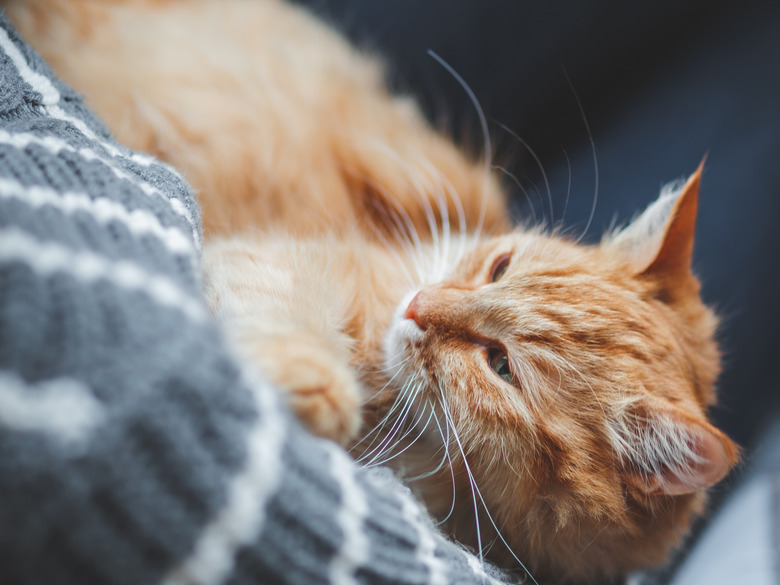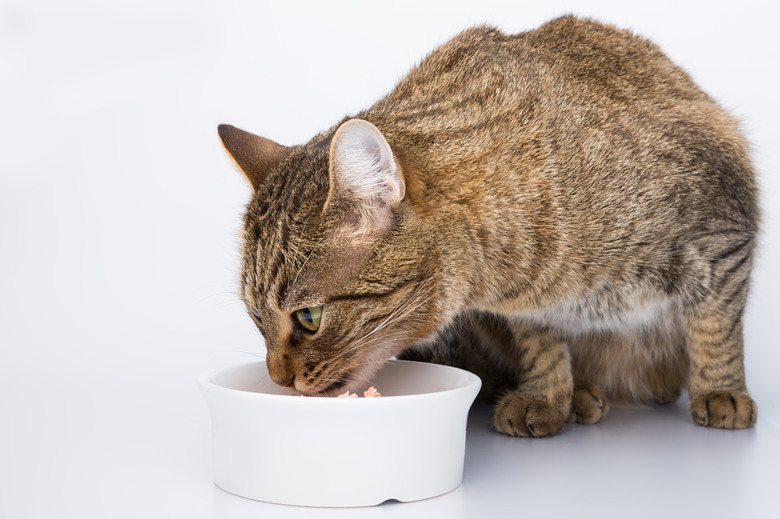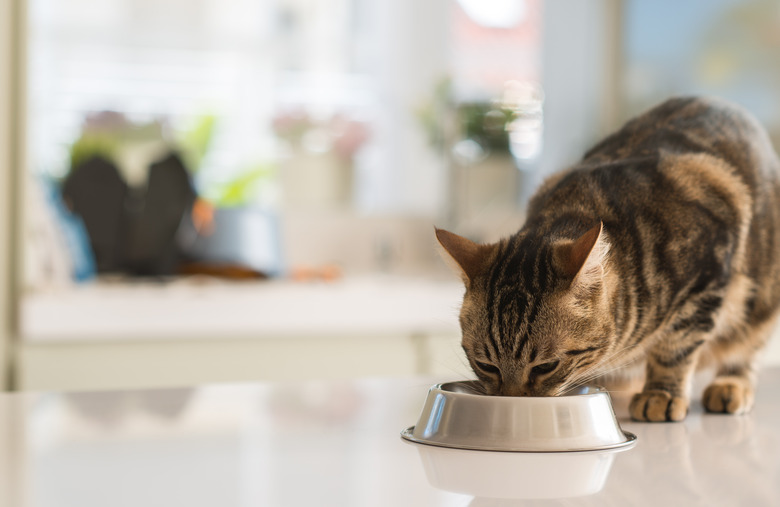Why Does My Cat Like To Cuddle After Eating?
After eating a delicious meal, it's not uncommon for a well-fed cat to lumber from his or her food dish to their favorite human's lap for a quick snooze or a long cuddle. Most pet parents live for these snuggle sessions, and they're always welcome. But is there something about eating that stimulates affection from our feline counterparts?
While many varieties of wild cats prefer to eat alone, house cats don't have an atypical eating behavior. Mealtime habits are often left to the individual idiosyncrasies of each cat. Some cats have a tendency to gorge themselves at meal times. Other cats may play with their food, leave trophies, or enjoy feeding while being stroked or watched by their humans.
PURR: What Does It Mean When A Cat Sleeps On Top Of You?
People are often fascinated by their cats' quirky eating behaviors and regard mealtime with the rapt attention of an audience viewing a stage performance. Pet parents sharing their cats' unusual or bizarre dinnertime rituals is a popular source of amusement on internet message boards. Among the many stories and questions cat lovers ponder online: why do cats like to cuddle after eating?
Cats cuddle after mealtime for warmth.
Cats cuddle after mealtime for warmth.
Both humans and cats can experience a decrease in core temperature after eating a meal because the body redirects blood flow to the digestive system. When there is less blood circulating throughout the body, a cat's core temperature can drop.
Cats will crave warmth in response to decreased body temperature, and humans who are lucky enough to be near a well-fed kitty will most likely reap the benefits of a post-meal snuggle.
Cats snuggle after eating for security.
Cats snuggle after eating for security.
Mother cats teach their kittens many critical behaviors and important life skills like hunting, social interaction and toileting. Mama cats also teach their young kittens the value of seeking safety and protection.
Much of the behaviors cats express to their humans are artifacts inherited from their kitten-hood. Purring, kneading, cuddling and sleeping on our necks and faces are all instincts that recreate the intimate bonds our cats shared with their mothers.
Cats who cuddle after eating are strengthening bonds.
Cats who cuddle after eating are strengthening bonds.
Your cat loves you. It's a tragic myth that cats are indifferent towards their humans because, in fact, cats are constantly looking to strengthen bonds with their caretakers.
MEOW: What Does It Mean When A Cat Purrs?
Cats show their affection through proximity, which translates to behaviors like head butting, sitting on laps and, of course, cuddling. Cats will also lavish their humans with the primary feline method of vocal communications: purring. A 2009 study found that cats purr to solicit affection from their humans.
Cuddling after mealtimes is a hormonal response for cats.
Cuddling after mealtimes is a hormonal response for cats.
Cats produce a hormone called oxytocin when they snuggle with their humans. Known as the the "love hormone," oxytocin is associated with positive emotions. Humans experience a blast of oxytocin when they spend time with loved ones. It turns out that our cats do too!
Researchers at Oregon State University discovered that domestic cats seek social bonding with their humans after mealtime because they instinctively crave the hormonal response. In their study, analysts recorded the amount of time house cats and shelter cats spent with four stimuli: human social interaction, food, toys and scent. Although there was clear individual variability in cat preference, social interaction with humans was the preferred stimulus for cats, especially following a meal. This finding was consistent for both house and shelter cats.
Common house cat eating behaviors
Common house cat eating behaviors
Cats will eat all day long if given a chance. Many cats will eat throughout a 24-hour cycle with most feeding activity around mornings and evenings. If given access, cats can eat up to 20 small meals each day.
Cats taste food in a completely different way from humans. Cats are sensitive to the flavor and scent of amino acids, which are the building blocks of proteins, and will often have a preference for some over others.
Cats often play with their food because they are mimicking hunting behavior. When a cat has captured prey — but is not hungry — they will keep their dinner "alive" until they are ready to eat.
Cats get bored with food. Cats exhibit the "monotony effect" with their dietary habits, just like humans do. Essentially, cats will develop an aversion to their favorite foods after consuming them over a period of time. Feeding on a primary type of food, with occasional novel food items, is the most natural eating pattern for cat.
Eating is not a social activity for cats. Cats do not adjust or alter their mealtime behaviors when in the presence of other cats. They follow strict individual routines of feeding, hunting and grooming.
Conclusion
Conclusion
Cats display a wide range of eating behaviors both during and after mealtime. Many of these feeding habits vary depending on the individual cat, but animal behaviorists have identified snuggling after meals as a common behavior of both house cats and shelter cats.
Cats who cuddle their humans after eating are often seeking warmth, security, bond-strengthening or blast of feel-good hormones. If a kitty enjoys spending time near you after dinner, it means she loves you!


